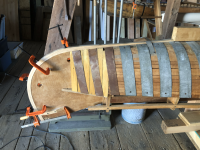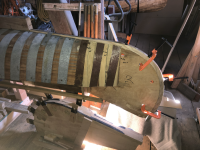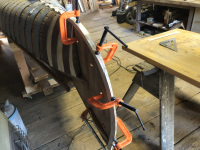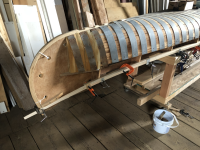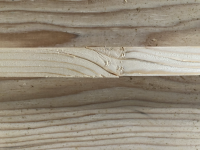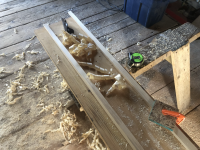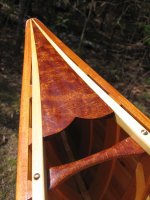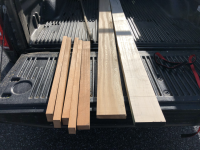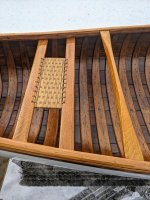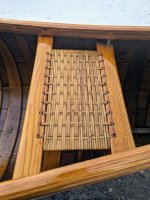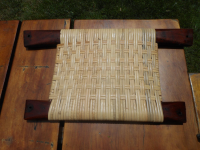After a week away working in Vermont, I returned to the barn/shop and at Mr. Thurlow's ( the Atkinson Traveler designer; Northwood Canoe Co.) suggestion I steamed and installed the last, sharpest rib bends at the ends of the canoe. Logic suggested that a strongback directly over the stem recess would allow me to insert shims to tightly hold the rib to the stem and inhibit splintering. So I bandsawed a 2x4 scrap and fastened it in place at each end.
Next I set up the steam rig with a plastic bag this time to accommodate two previously bent ribs from another project which didn't work out for that canoe. These had been bent over a Chestnut Bobs Special for replacement and were in good shape other than that they didn't take the final shape I wanted to fit inside the old canoe. I assumed there would be breakage so I would make my first attempt at this sharp bend with ribs that were already 'discards'.
Once steamed for about 40 minutes, I knew the ribs were ready because the shape of the ribs had relaxed in the steam to nearly straight again! I removed the first rib from the bag, placed and shimmed under the strongback, lo and behold.... the first one bent like a limp noodle with absolutely no problem or splintering! Stunned but emboldened, I grabbed the other 'discard' rib and repeated the process with the exact same result. I had been dreading the possibility of damaging several rib blanks and here I felt like some sort of pro!
Now... it's on to planking. Ribs were faired with a 60 grit long board sander I made from two slabs of 3" wide Masonite and rib-stock paper holders under two newel post knobs screwed through the masonite:
I struck a centerline on the canoe, selected and laid out the garboard strakes, and will commence planking tomorrow. In Thurlow & Stelmok's book, Building the Wood Canvas Canoe, Jerry Stelmok describes using 18ga. steel nails to fasten the planking to the stem in between ribs. I was surprised at this, though in each of the restorations I've done the planking was nailed into the stems with steel. Planking which crosses a rib at the stem gets bronze ring shank nails. I'm wondering if 5/8" nails, pre-drilled, are sufficient for this?
